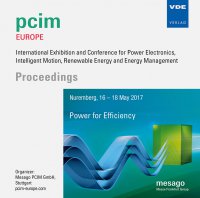Reactive Power Operation of a Single Phase AC-AC DAB Converter
Konferenz: PCIM Europe 2017 - International Exhibition and Conference for Power Electronics, Intelligent Motion, Renewable Energy and Energy Management
16.05.2017 - 18.05.2017 in Nürnberg, Deutschland
Tagungsband: PCIM Europe 2017
Seiten: 4Sprache: EnglischTyp: PDF
Persönliche VDE-Mitglieder erhalten auf diesen Artikel 10% Rabatt
Autoren:
Jagau, Martin; Patt, Michael (Technologie Netzwerk Allgäu, Memmingen, Germany)
Inhalt:
Transformers are used when galvanically isolated energy transfer, i.e. according to the European standard EN61558, is necessary. Traditional transformers are bulky and consist 80% of copper and iron. Since the 1960s the demand for refined copper has increased by 250% from 5 mil tons to 20 mil tons. Due to the increasing high demand of copper a continuous price increase in the next years is expected. To guarantee the availability of copper for the next decades and to counteract the expected price increase, it is essential to find resource friendly alternatives. Compared to a three stage power conversion system a one stage AC-AC converter based on a dual-active-bridge (DAB) converter does not incorporate electrolytic capacitors in the power path. The elimination of electrolytic capacitors makes it possible to reduce size and weight and reduce the amount of needed copper, without sacrificing lifetime. The functionality of the one stage system is ensured with ohmic loads. The problem arises, when non ohmic loads are connected and the converter enters reactive power operation, which produces a highly nonlinear shape of the control parameter. Therefore an extremely dynamic control scheme is essential in order to keep track of the control parameter. Furthermore, due to the low capacitance on the output of the converter, the power stage is highly unstable. It is therefore essential to design and implement a control scheme with high dynamics and robustness. In this paper the drawbacks of an AC-AC DAB converter under reactive power operation are described. Furthermore a current mode control scheme is presented. Firstly the transfer functions of the control stages are measured and afterwards a current mode controller is implemented and optimized. Lastly the newly designed current mode controller is compared to a voltage mode control scheme and it is shown, that the bandwidth is increased. Therefore the proposed control scheme enhances the reactive power operation of a one stage AC-AC converter.


